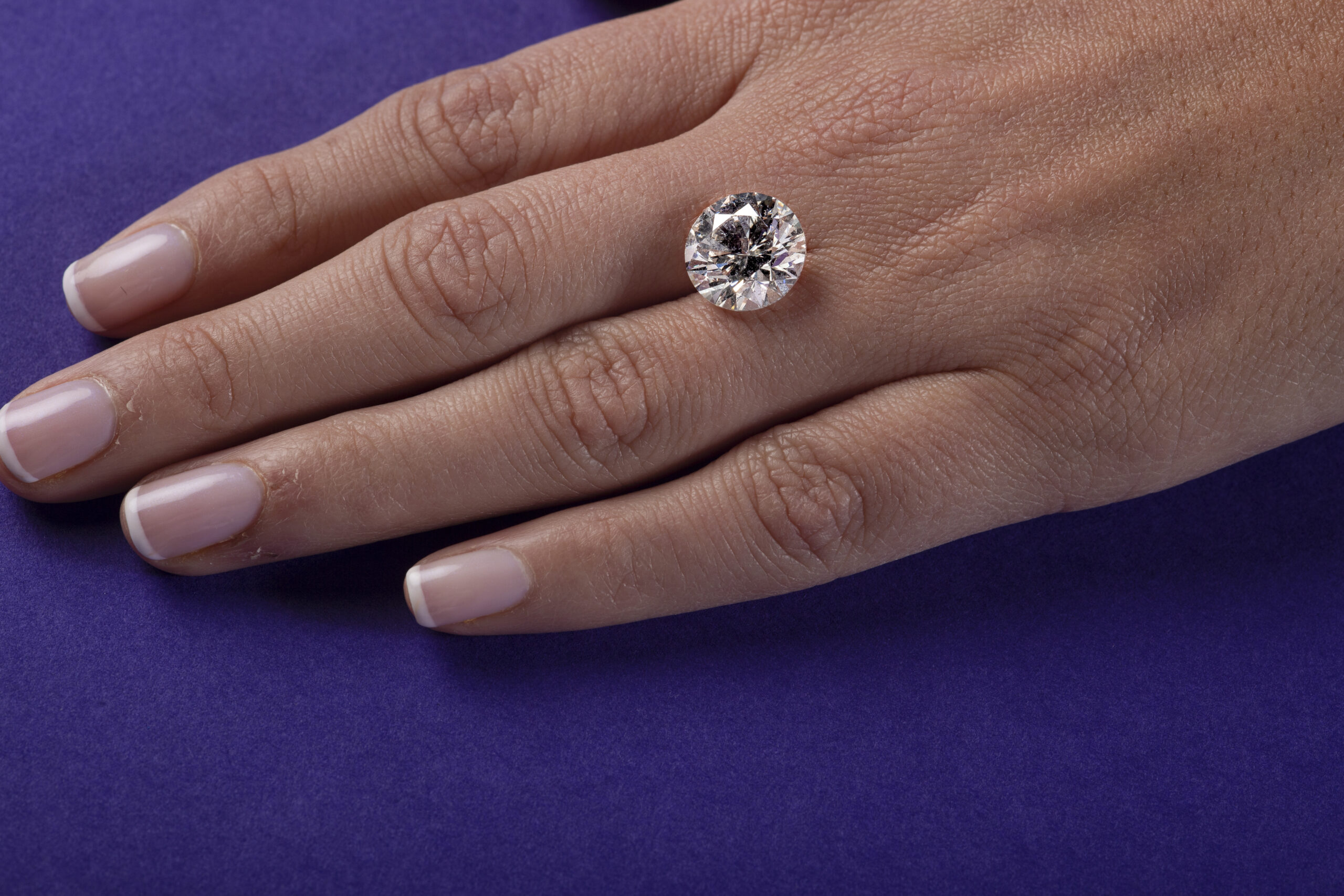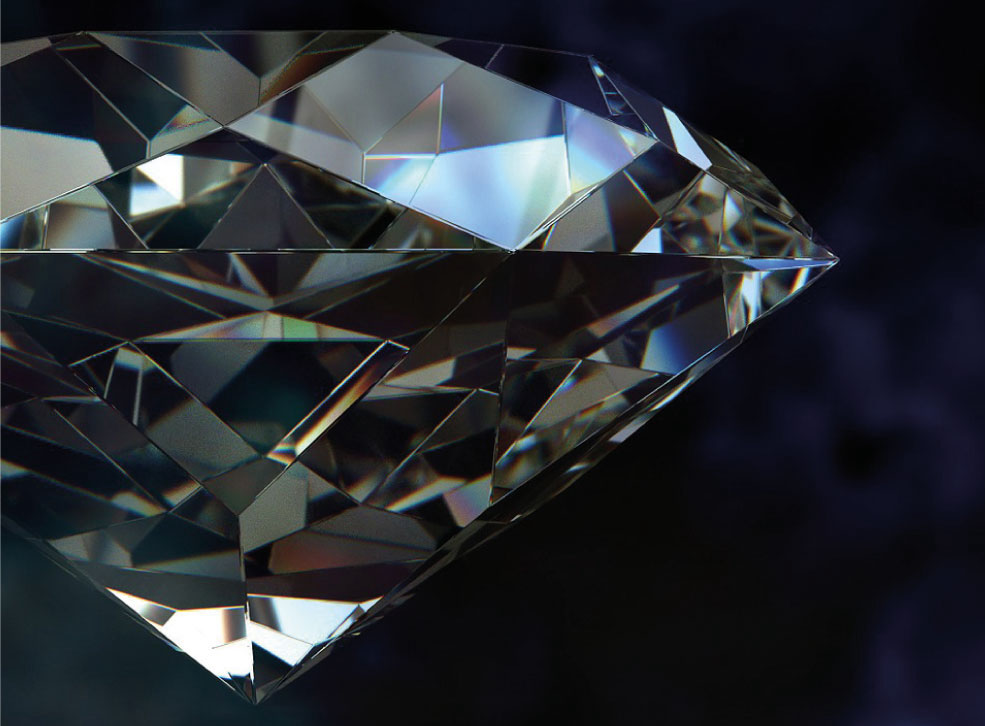Diamond buying guide | The 4Cs explained

At Alicia J, we understand that shopping for a diamond can be a little overwhelming. It’s an expensive purchase and if you haven’t bought a diamond before you may feel out of your depth. We’re here to give you a little helpful knowledge, so that you can buy with more confidence. First off, there’s more to diamonds than carats: you need to understand the 4Cs of a diamond, which are: cut, colour, clarity and carat weight. Diamond professionals use these 4Cs to determine the value, beauty and rarity of a diamond. Understanding them will give you a head start in how to buy the right diamond for you.
Read our guide to the 4Cs below, and following that, our advice on what to look for when choosing your diamond.
Carat Weight
The carat refers to the weight of the diamond. A carat is one-fifth of a gram, so 5 carats are equal to one gram. For diamonds under one carat, each carat is divided into 100 points – similar to pennies in a pound. For example, 0.50ct = 50 points.
Even if you have never bought a diamond before, you will know that the higher the carat weight, the higher the price. However, a common misconception is that a 2.00-ct diamond will cost exactly twice as much as a 1.00-ct diamond. Larger diamonds are considerably rarer than smaller diamonds and the scarcer something is, the more it costs. So, the price of diamonds increases exponentially with carat weight. For example, a 5.00-ct diamond will not cost 5-times the amount of a 1.00-ct diamond as it is the size and rarity of the diamond that accelerates its price and value. However, carat weight definitely isn’t the most important factor when thinking about the beauty of a diamond.

Colour
Another common misconception is that all diamonds are colourless. Truly colourless diamonds are fantastically rare. In fact, most diamonds contain tints of yellow or brown. Diamond colour is graded from D to Z, with D being the whitest, most colourless and Z containing noticeable yellow or brown tints. These tints of colour can be very subtle but cause dramatic variations in the price. In short, the whiter the diamond, the rarer it is, and the rarer it is, the higher the value.
Cut
The cut refers to the arrangement of a diamond’s facets and is the only C that is affected above ground, by human hands. This arrangement impacts how the diamond interacts with light, and therefore, how much it sparkles. Even diamonds with the highest colour or clarity grade will appear dull if poorly cut. Many jewellers sell large, poorly cut diamonds at a ‘bargain’ price. However, the cut is what makes the diamond beautiful, and to us, that’s what’s important.

Clarity
Very few things in life are perfect, and the same goes for diamonds. Diamonds are formed underground, under tremendous heat and pressure, so it is actually extremely rare to find a 100% perfect diamond. Nearly all diamonds possess internal and external characteristics such as blemishes and scratches on the diamond’s surface, which are known as inclusions.
Diamonds with fewer inclusions receive higher clarity grades and so are a higher price. However, while inclusions affect the value of a diamond, the beauty is rarely affected, because most inclusions can’t be seen with the naked eye.
Balancing the 4C's
Which is most important?
Once you fully understand the 4Cs, you can learn how to prioritise one over the other to get the best diamond for your budget. Which of the 4Cs you decide to prioritise depends on a variety of factors. Some shapes of diamonds, for example, Emerald cuts, tend show inclusions more than others, so in this case clarity should be prioritised.
To us, the most important C is usually the cut. A diamond’s brilliance and fire (fire is the rainbow sparkle effect you see when the stone reflects light) greatly depend on the cut. A perfectly cut stone will allow you to compromise on other characteristics, while still having a high-quality, valuable diamond with magnificent beauty and sparkle. A poorly cut diamond on the other hand, will usually appear dull and hold very little value. We recommend reducing spending on other areas such as colour or carat weight to ensure an exceptional cut.
In terms of colour and clarity, it is important to make sure your diamond appears bright and white and clarity inclusions are not visible to the naked eye. When evaluating clarity, note where the inclusions are positioned on the diamond, as this will impact whether or not the blemishes are visible.

As previously mentioned, carat refers to the weight of a diamond not the size. Although this is an important factor which impacts the appearance of the stone, a beautifully cut 0.8ct, eye clean, colourless diamond is of much higher quality – and much more beautiful – than a poorly cut 2ct diamond with a lower clarity and colour grading.
Ultimately, balancing the 4Cs depends on personal preferences and which characteristics the buyer would like to prioritise, and which they are happy to compromise on. To some, ensuring their diamond is bright white and colourless is more important than a few blemishes or imperfections, so they are willing to compromise on clarity to get their preferred colour. There is no right answer, but it is important to gain a good understanding of each of the 4Cs to make an educated decision. Having knowledge makes for a much more confident purchase.
At Alicia J, we can help you choose the right diamond, and show you what to look for in each stone. We only offer the highest quality GIA certified diamonds, while ensuring our customers get the best value for their budget.
For assistance with evaluating the qualities of a diamond and balancing the 4Cs to get the best possible diamond for your budget, get in touch with one of our friendly experts today.
WITH LOVE